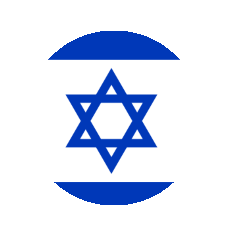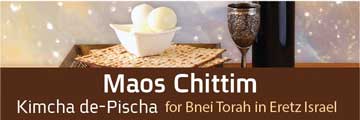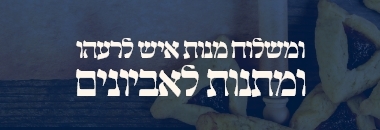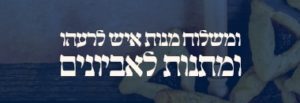What is the essence of this mitzva? What’s the difference between the mitzva of visiting the ill and the general mitzva of chessed (love-kindness)? What is the source for the mitzva? Why didn’t Hashem visit Avraham Avinu in the first two days after his bris? Which sick people require visits? Does a person with a fractured bone also require visits? Is a headache, eye ache, or other pain enough of a reason to invoke the mitzva? Some people involved in the mitzva of visiting the ill are exempted from all other positive mitzvos. Which kind of visitor meets the criteria? When is visiting the ill not a mitzva at all, and how should they be helped? Of this, and more, in the coming article.
Sources
The Gemara (Sota 14a) teaches us that the mitzva of visiting the ill is learned from Hashem Himself. After Avraham Avinu had his bris he felt unwell, and on the third day post-bris Hashem came to visit him. The Gemara points out that as our mission as humans is to emulate our Creator, since Hashem visited the ill, we, too, are required to do the same. This week’s article will focus on one aspect of this precious mitzva – defining ‘ill’: who needs to be visited?
Illness in One Part of the Body
This week’s parasha begins with the pasuk: “The Lord appeared to him in the plains of Mamre, and he was sitting at the entrance of the tent in the heat of the day” (Bereshis 18:1). Rashi quotes the Gemara (Bave Metzia 86a): “Said Rabbi Chama bar Chanina: It was the third day after his circumcision, and the Holy One, blessed be He, came and inquired about his welfare.”
The Maharal (Gur Aryeh, Bereshis 18:1) explains why the visit was specifically on the third day. On the first two days after the bris, the baby is not considered ill all over, but rather ill in one limb. On the third day he is considered dangerously ill because he is ill in his entire body. That is when he requires visits.
What happens on the third day after a bris? The Maharal explains (as well as contemporary medical literature) that on the third day, a wound reaches the second stage of healing which is Inflammation. During this phase, damaged and dead cells are cleared out, along with bacteria and other pathogens or debris. This happens when the area is engulfed with mucus, and white blood cells engulf debris and destroy it. At this stage one’s entire body is ill, and this is the time to visit.
Accordingly, the mitzva of Bikur Cholim does not apply to visiting one suffering from a broken bone, even if he needs a cast because the rest of his body is functioning well.
The Zera Chaim (chapter 20) explains that the Maharal’s understanding also appears in the Arizal (Sha’ar Hamitzvos, Parashas Vayechi, 14b): The ill require visits because they lack the fiftieth Gate that that is why the Shechinah is at his head. This explains why he falls into is bed מט-ה)) – i.e., since he is only left with 49 gates (the numerical value of the letters mem and tes), the hey, referring to Hashem, is above him.
While explaining esoteric concepts is not within the scope of this article, the concept here is clear – visiting the ill is a mitzva that only applies to the bedridden.
Rav Elyashiv ruled that practically, the mitzva of Bikur Cholim only applies where the ill is sick all over, not when suffering from an ailment of one limb such as an earache, eye inflammation, fracture, etc.
Bikur Cholim vs. Gemilus Chasadim
While a patient may be physically fit and only incapacitated due to a fractured leg, he may need assistance in daily activities as well as companionship to combat loneliness. Is visiting and helping him a mitzva of Bikur Cholim?
While helping anyone in need is the mitzva of Gemilus Chasadim, the mitzva of visiting the ill only applies to the bedridden as we established earlier.
In addition, there are several other differences between the mitzva of Gemilus Chasadim and Bikur Cholim:
- Bikur Cholim remains an obligatory even when there is a slight danger involved. The Gemara (Bave Metzia 30b) writes that when a “contemporary” (two people who were born in the same mazal) of an ill person visits him, he takes one-sixtieth of his illness. Since visiting an ill contemporary involves contracting a bit of his illness, a special derivation is necessary to teach that even so, one is required to go and visit him.
- The Gemara in Nedarim writes (40a) that refraining from visiting the ill is equated with bloodshed, because the ill person may be desperate and have nobody to clean out his room, air it out, or lift up his spirits and pray for him. As a result, he may die. (The recent Covid pandemic was a sad illustration of this point. Many elderly and isolated patients were lost due to restriction on care and company.) Therefore, whenever someone is sick, we must be concerned that this is his situation and go and visit him. Contrast that with one incapacitated due to a fracture, for example, who is not considered at risk unless otherwise established. While performing acts of Gemilus Chasadim for him is a mitzva, refraining from doing so is not equated with bloodshed.
- One who is busy with the mitzva of Bikur Cholim is not obligated to perform any other positive mitzva, in contrast with the mitzva of Gemilus Chasadim which does not exempt one from other mitzvos. See below for further details.
- The mitzva of Bikur Cholim has rules – what time of day to come, what to say, and how to act. These details do not apply for the mitzva of Gemilus Chasadim.
Degrees of Illness
There are diseases for which the ill needs and enjoys visits, and others in which they do not. The Gemara (Nedarim 41a) notes that a person with a stomach flu does not appreciate visitors, as well as people suffering from headaches and eye ailments who find visitors burdensome.
In these cases, the Shulchan Aruch rules (YD 335:8) that visiting can still be accomplished by staying in the foyer or hallway, and helping out family members or saying Tehilim on behalf of the person.
Time for Visiting
When is the time to visit the ill? The Shulchan Aruch writes (YD 335:1) that in the first two days only family and close friends should visit. From the third day onwards, everyone is obligated to do so. However, if his illness is serious, everyone should visit from day one.
The poskim are divided regarding the reason for this delay. From the Levush (YD 335:1) it appears that the reason is because he is not fully ill until the third day. Therefore, he only takes pleasure in visits of close friends and family. However, the Taz (YD 335: footnote 1) maintains it is because of confidentiality: if the illness didn’t worsen the news shouldn’t be publicized because publicity is detrimental and harms one’s mazal. Only after three days have passed, once news of the illness is already public knowledge, it is a mitzva for everyone to visit.
Apparently, this corresponds with the Maharal’s opinion (that the mitzva only applies to the bedridden – i.e. from the third day onward). On the first two days, when he is not ill but rather weak or incapacitated, the mitzva of visiting is the mitzva of Gemilus Chasadim which obligates his friends and close relative who can cheer him up. Once three days have passed without the illness letting up, Bikur Cholim becomes applicable.
This appears to also be the Rambam’s position (Avel 14:5): the mitzva to visit the ill only begins on the third day.
Occupied in a Mitzva
In the Gemara (Succah 25a) we learn: “The ill and their aids are exempted from the Succah.” The Gemara (Succah 26a) explains that the ill referred to here are not necessarily terminally ill patients, but even those suffering from simple headaches or eye infections. The Gemara recounts that when Rabban Shimon ben Gamliel was in Caesarea on Succos and had an eye infection, Rabbi Yosi Berabi permitted him and his aid to sleep outside the succah. The Gemara explains that while one who suffers in the Succah is exempted form residing in it, his aids (if he needs them) are not. However, the ill is exempted along with his aids.
The Rishonim explain (Rabbi Yehonoson of Lunel, Succah 26a; and others) that the exemption for the ill from the mitzva of Succah stems from the halacha that one should live in his succah in the same manner as he lives at home. Just as an ill person may move into a hospital or another facility to assist recovery along with his aids (if he needs them), so too, for the Succah – the ill, along with his aids, are exempted from residing in it.
The Kovetz Shiurim (Volume II chapter 46:1) though, sees it differently. He learns that the Gemara exempted the ill and their aids under the rule that absolves those involved in one mitzva from other (positive) mitzvos. Therefore, if the ill person cannot pray because of his illness, his assistants are also exempted from praying. Kovetz Shiurim sees it as an extension of the mitzva of returning lost items – if it is a mitzva to return one’s lost items, it is certainly a mitzva to help in restoring one’s health. If one can assist another’s recovery, he is certainly obligated to do so.
The Mishna Brura rules this l’halacha (640:6-7): the ill is exempted from sitting in a Succah because ill people must be in the place that is conducive for their recovery. Aides are exempted from the mitzva of Succah because the aid is involved in another mitzva – the mitzva of Bikur Cholim.
Bikur Cholim vs. Assisting Cholim
According to the Maharal’s view that sees the mitzva of Bikur Cholim as only applying to the bedridden, are aids of one who is not a chole for this mitzva considered involved in a mitzva and therefore exempted from other mitzvos, or not?
Bikur Cholim is the obligation to review the ill person’s care and check out his situation. A visitor on a Bikur Cholim visit is not there only for a friendly chat – to fulfil the mitzva one must observe the ill person’s medical situation, physical and emotional needs, and do as much as possible to alleviate his discomfort and expedite his recovery. One of the main obligations is to pray for the ill upon observing his suffering.
Assisting the ill is another mitzva, one that pertains to every person in need, whether bedridden or not. The assistant is essentially performing the mitzva of Gemilus Chasadim, helping him in everything he may need.
There are halachic differences between the two: the Mishna Brura writes (640:11) that the assistant of an eye infection or headache patient is exempted from the mitzva of Succah only when he is needed, while an assistant for a bedridden individual has a blanket exemption even when he is not needed because his constant presence is necessary in case he may be needed.
Another difference applies to a gastro patient. While he should not be visited (Shulchan Aruch YD 335:8) he still needs assistance, and doing so is a mitzva (ibid, 10). While Bikur Cholim may place him in an uncomfortable situation, caring for him and assisting in his recovery is certainly a mitzva despite the discomfort in his physical situation.
Summary
The mitzva of Bikur Cholim involves reviewing the ill person’s medical and emotional state, ensuring that all of his needs are met including hygiene, nutrition, ventilation, and emotional wellbeing. Boosting his spirits and praying for him are essential components of the mitzva. This mitzva applies once the illness is pronounced, not limited to one area of the body. This mitzva obligates every Jew, and exempts one from performing another positive mitzva such as sitting in the succah, prayer, etc.
Helping a suffering individual, both one who is healthy and one who is ill is a mitzva of Gemilus Chasadim and applies to anyone who needs assistance, regardless of his situation.










